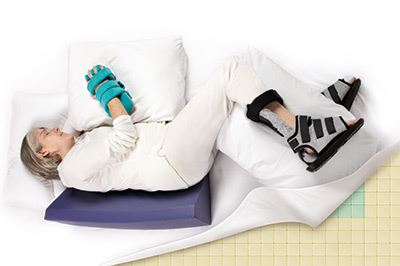-
Home
-
Due diligence in pressure management is key
Due diligence in pressure management is key
December 5, 2014

Medical providers and caregivers are all aware of the importance of knowing how to prevent bed sores and other wounds from developing. However, some wounds may still develop, and at this point, the priority shifts toward infection prevention, detection and, if necessary, treatment.
While the control of infections in wound care demands prompt and vigilant attention, it also requires patience, experts told McKnight's Long Term Care News. A caregiving team's assessment of its own infection treatment strategies may also spur changes in protocol.
Everyone needs to stay involved and educated
According to an educational project known as Wound Care Centers, certain groups of patients are especially prone to developing pressure ulcers and other skin lesions. These include bariatric patients, those in intensive care, people who are confined to beds or wheelchairs because of spinal cord injuries, neonates and children with fragile skin, and geriatric patients. Additionally, people with HIV or AIDS may experience complications in wound healing.
Experts told McKnight's Long Term Care News that wound infections can raise mortality risk by 55 percent.
"There is a delay between when an infection is starting and when it's truly recognized and treatment begins. It's important to be asking what is different with the wound and the resident," said James Spahn, M.D., FACS, founder/CEO of EHOB Inc. and co-founder of WoundVision, quoted by the news source. "This is why it's important to have everyone - from administrative staff all the way to the person who changes bed linens - involved and educated on wound and infection detection and prevention, and all the factors that can increase a person's risks."
Holly Korzendorfer, PT, Ph.D., CWS, FACCWS, vice president of business and clinical development for DermaRite Industries, told the news source that all caregivers need to know how to recognize the signs of infection, which may include redness, pain, abnormally slow healing, fever and more. However, not all symptoms will be present, and conditions such as dementia may make detection difficult.
Certain clinical habits may actually hurt infection treatment. Specifically, antibiotics or other drugs, delivered orally or intravenously, may not be appropriate for treatment. When it comes to silver-based products and dressings, treatment should be limited to one week.
Ultimately, it may be optimal to use both preexisting and innovative approaches to treating infected wounds. For example, there are thermal cameras and DNA swabbing techniques that can help detect infection. Additionally, negative pressure, low-frequency ultrasound, ultraviolet radiation and electrical stimulation may help fight pathogens. However, experts told the news source that using multiple products may not necessarily help the healing process. Instead, caregivers need to be patient enough to understand that slow progress is better than no progress.